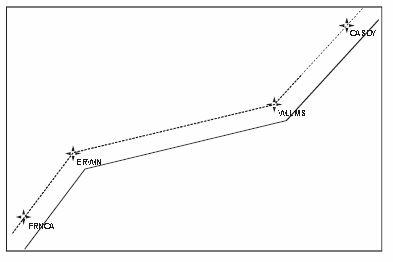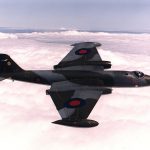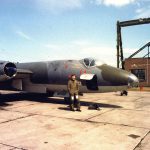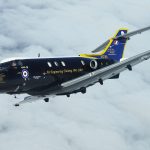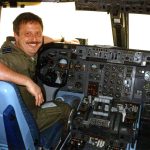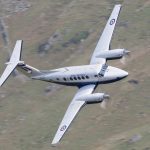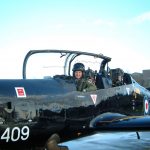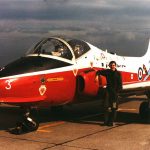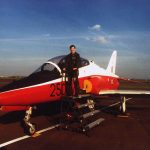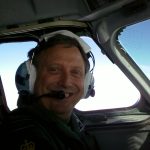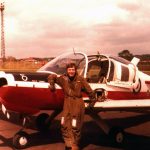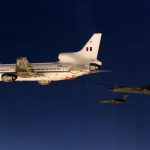Basic RNP Functions
An RNP system is an RNAV system whose functionalities support on-board performance monitoring and alerting. Current specific requirements include:
- capability to follow a desired ground track with reliability, repeatability and predictability, (including optional curved path); and
- where vertical profiles are included for vertical guidance, use of vertical angles or specified altitude constraints to define a desired vertical path.
The on-board performance monitoring and alerting capabilities may be provided in different forms depending on the system installation, architecture and configurations, including:
- display and indication of both the required and the estimated navigation system performance;
- monitoring of the system performance and alerting the crew when RNP requirements are not met; and
- cross track deviation displays scaled to RNP, in conjunction with separate monitoring and alerting for navigation integrity.
An RNP system utilizes its navigation sensors, system architecture and modes of operation to satisfy the RNP navigation specification requirements. It must perform the integrity and reasonableness checks of the sensors and data, and may provide a means to deselect specific types of NAVAIDs to prevent reversion to an inadequate sensor. RNP requirements may limit the modes of operation of the aircraft, e.g. for low RNP, where flight technical error is a significant factor, manual flight by the crew may not be allowed. Dual system/sensor installations may also be required depending on the intended operation or need.
Specific RNAV and RNP Functions
Performance-based flight operations are based on the ability to assure reliable, repeatable and predictable flight paths for improved capacity and efficiency in planned operations. The implementation of performance-based flight operations requires not only the functions traditionally provided by the RNAV or RNP system, but also may require specific functions to improve procedures, and airspace and air traffic operations. The system capabilities for established fixed radius paths, RNAV or RNP holding, and lateral offsets fall into this latter category.
Fly-by Turns Fly-by turns are a key characteristic of an RNAV flight path. The RNAV system uses information on aircraft speed, bank angle, wind and track angle change to calculate a flight path turn that smoothly transitions from one path segment to the next. However, because the parameters affecting the turn radius can vary from one plane to another, as well as due to changing conditions in speed and wind, the turn initiation point and turn area can vary.
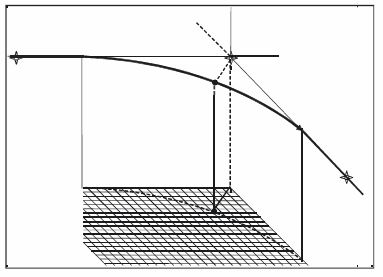
Fixed Radius Paths (FRP) Fixed Radius Paths (FRP) take two forms:
- The Radius to Fix (RF) leg type is one of the leg types that should be used when there is a requirement for a specific curved path radius in a terminal or approach procedure. The RF leg is defined by radius, arc length and fix. RNP systems supporting this leg type provide the same ability to conform to the track-keeping accuracy during the turn as in straight line segments. Bank angle limits for different aircraft types and winds aloft are taken into account in procedure design.
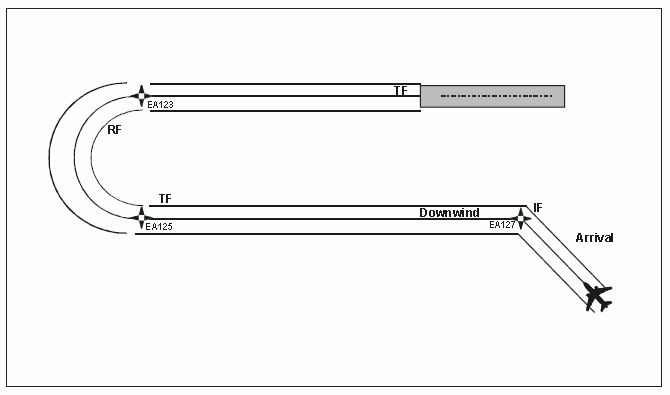
- The Fixed Radius Transition (FRT) is intended to be used in en-route procedures. These turns have two possible radii, 22.5 NM for high altitude routes (above FL195) and 15 NM for low altitude routes. Using such path elements in an RNAV route enables improvement in airspace usage through closely spaced parallel routes.
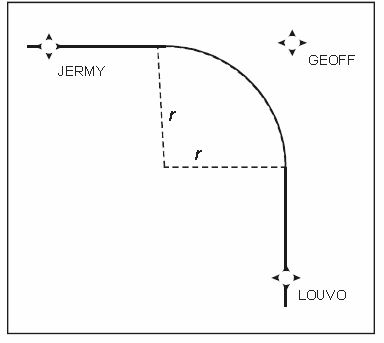
Holding Pattern The RNAV system facilitiates the holding pattern specification by allowing the definition of the inbound course to the holding waypoint, turn direction and leg time or distance on the straight segments, as well as the ability to plan the exit from the hold. For RNP systems, further improvement in holding is available. These RNP improvements include fly-by entry into the hold, minimising the necessary protected airspace on the non-holding side of the holding pattern, consistent with the RNP limits provided. Where RNP holding is applied, a maximum of RNP 1 is suggested since less stringent values adversely affect airspace usage and design.
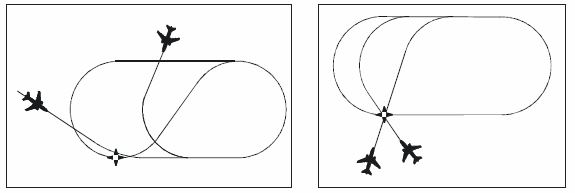
Offset Flight Path
RNAV systems may provide the capability for the flight crew to specify a lateral offset from a defined route. Generally, lateral offsets can be specified in increments of 1 NM up to 20 NM. When a lateral offset is activated in the RNAV system, the RNAV aircraft will depart the defined route and typically intercept the offset at a 45° or less angle. When the offset is cancelled, the aircraft returns to the defined route in a similar manner. Such offsets can be used both strategically i.e. fixed offset for the length of the route, or tactically i.e. temporarily. Most RNAV systems discontinue offsets in the terminal area or at the beginning of an approach procedure, at an RNAV hold, or during course changes of 90° or greater.
